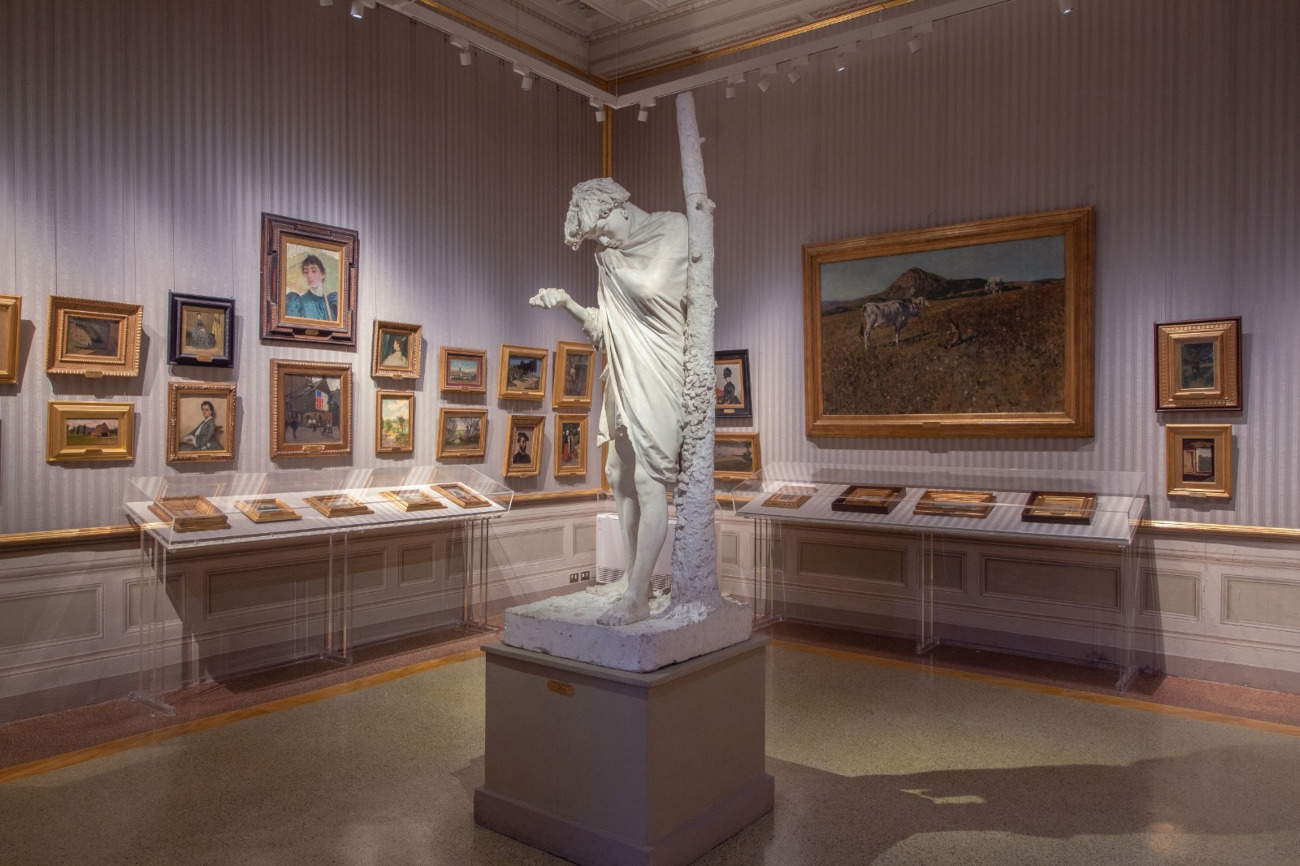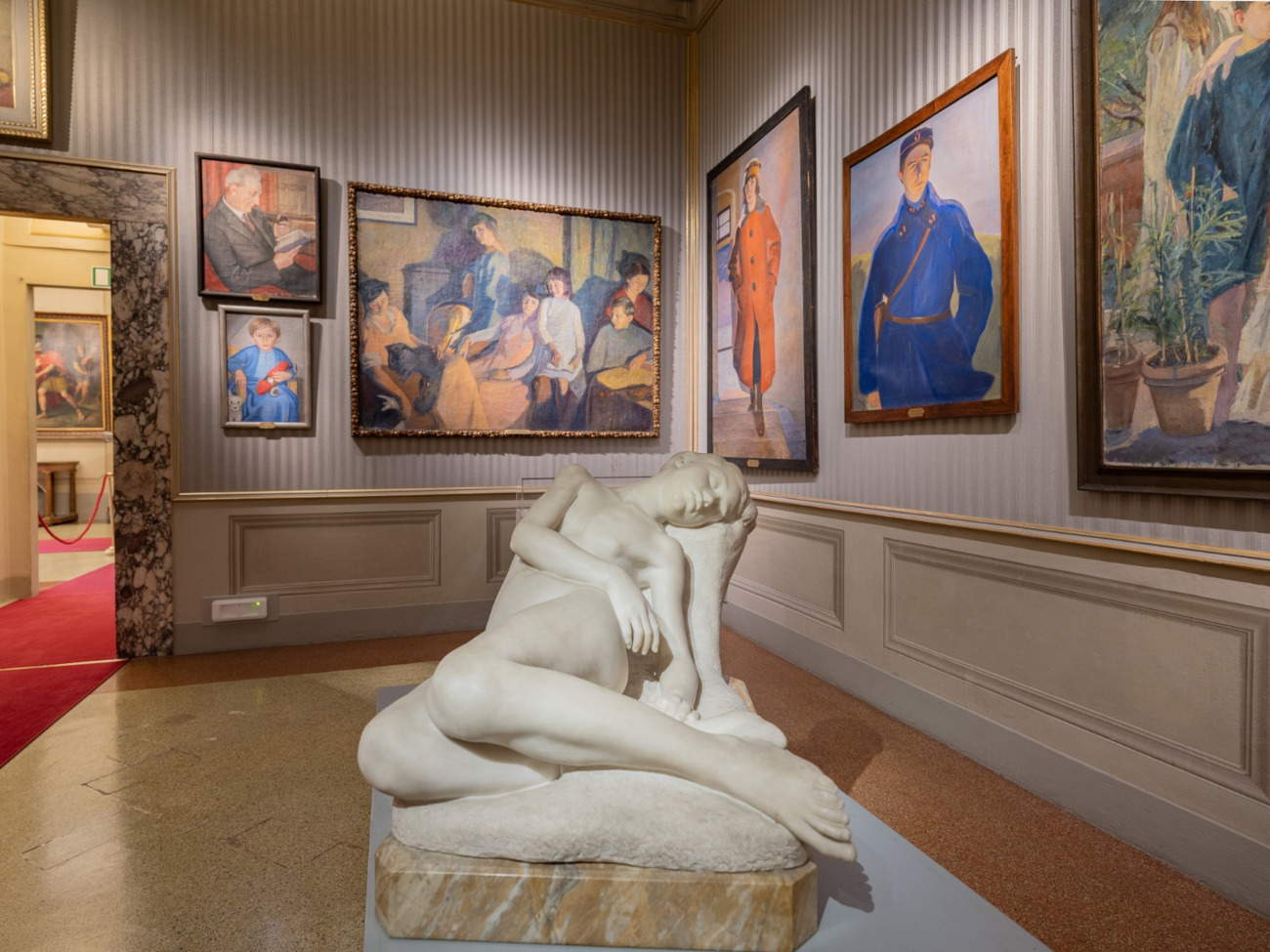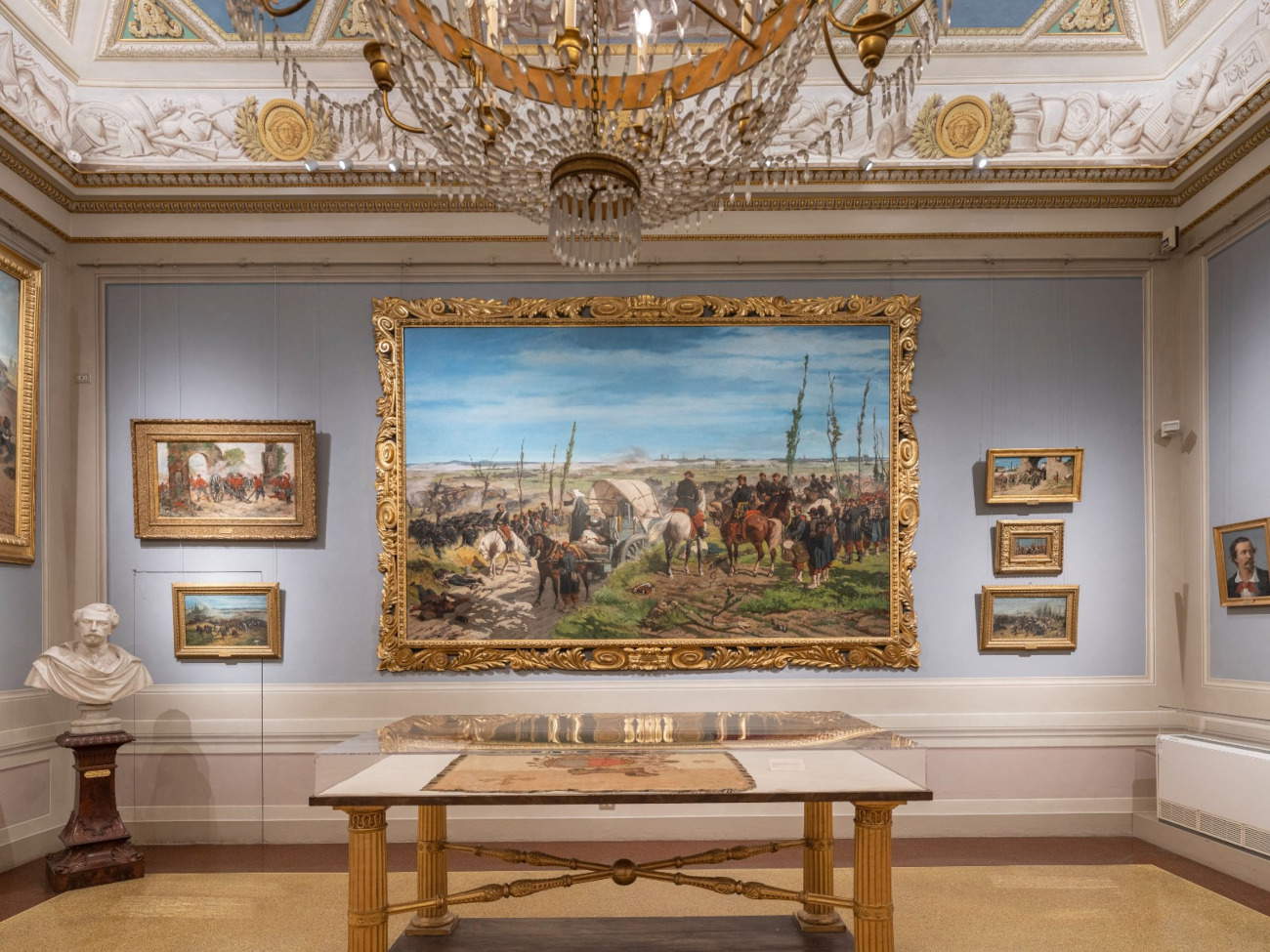On June 11, 1924, the Gallery of Modern Art at the Pitti Palace in Florence opened, and to celebrate its centennial, the Uffizi Galleries is publishing a virtual exhibition on its official website that tells the story of Gam through a selection of more than fifty masterpieces housed in the rooms on the second floor of the palace.
The idea of creating a museum space dedicated to modern art in Tuscany dates back to the early twentieth century, when the collection of critic and patron Diego Martelli was donated to the city of Florence with the aim of founding a museum that would represent the most advanced aesthetic trends of the time. In its first exhibition form, the Gallery of Modern Art offered a historical sequence, in which paintings by Pietro Benvenuti and Giuseppe Bezzuoli were succeeded by monographic rooms devoted to Antonio Ciseri and Stefano Ussi. A “shrine” of Macchiaioli painters was built around the legacy of Martelli himself. In addition, a review of contemporary artists was selected within the confines of the Tuscan figurative tradition, represented by Libero Andreotti, Felice Carena, Giovanni Colacicchi, and Baccio Maria Bacci, exhibited alongside other protagonists of Italian art of the interwar period. With these latter artists, the nascent gallery intended to highlight a specific vocation for local contemporary art, a trend that developed further in the postwar period, when the collection also opened up to artists of international significance.
With the reopening of the museum in 1972, efforts were made to foster a dialogue between the architectural context and the works on display, including the furnishings that Victor Emmanuel II had begun collecting since the 1861 Universal Exhibition in Florence. The criterion of genre division was adopted, bringing together the collection nuclei of the Accademia, those of the Savoy royal palace, and the purchases of the City of Florence, which flowed into the Gallery.
The collection was enriched by private contributions such as the collection of Leone Ambron (1947), the loan of Emilio Gagliardini, and the donations of Pietro Saltini and Domenico Trentacoste, up to the recent donation (2022) of Carlo Del Bravo. In addition, individual works by important artists such as Plinio Nomellini with Incidente in fabbrica (1993), Francesco Gioli with San Frediano a Settimo di Cascina (1995) and Adriano Cecioni with I primi passi (1996) were added. In recent times, with the amalgamation of the collections of the Palazzo Pitti museums and the Uffizi Gallery, the nineteenth- and twentieth-century collections have been further enriched. This has occurred through a policy of acquisitions shared with the GAM committee, to which proposals for purchases and donations relating to works of the modern and contemporary ages are periodically submitted.
Thanks to this teamwork, important masterpieces such as Eve Tempted by the Serpent and Love Wins the Force by Giuseppe Bezzuoli, the leader of Romanticism in Tuscany, and the Portrait of Count Arese in Prison by Francesco Hayez have been acquired in recent years. In addition, graphic works and sculptures by artists such as Adriano Cecioni, Libero Andreotti, and Manzù have been acquired, with a view to extending the collections to fundamental episodes of national and not only Tuscan artistic history.





 |
| Florence, Pitti Palace Gallery of Modern Art turns 100 and celebrates with virtual exhibition |
Warning: the translation into English of the original Italian article was created using automatic tools. We undertake to review all articles, but we do not guarantee the total absence of inaccuracies in the translation due to the program. You can find the original by clicking on the ITA button. If you find any mistake,please contact us.